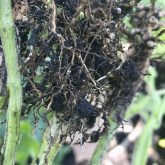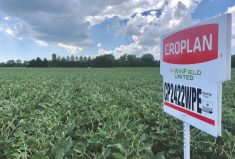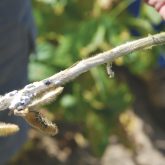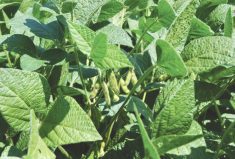If you had asked Saskatchewan farmers 25 years ago if they thought they could grow soybean, they would likely have laughed out loud at the very idea.
Fast-forward to today, however, and StatsCan says 300,000 acres of soybeans were planted in Saskatchewan last year, up from 170,000 acres in 2013, and the province’s soy acreage is on its way up again in 2015 as farmers attempt to diversify their rotations with a profitable crop.
That rapid expansion has Jeff Schoenau thinking about what’s going on in the dirt.
Read Also
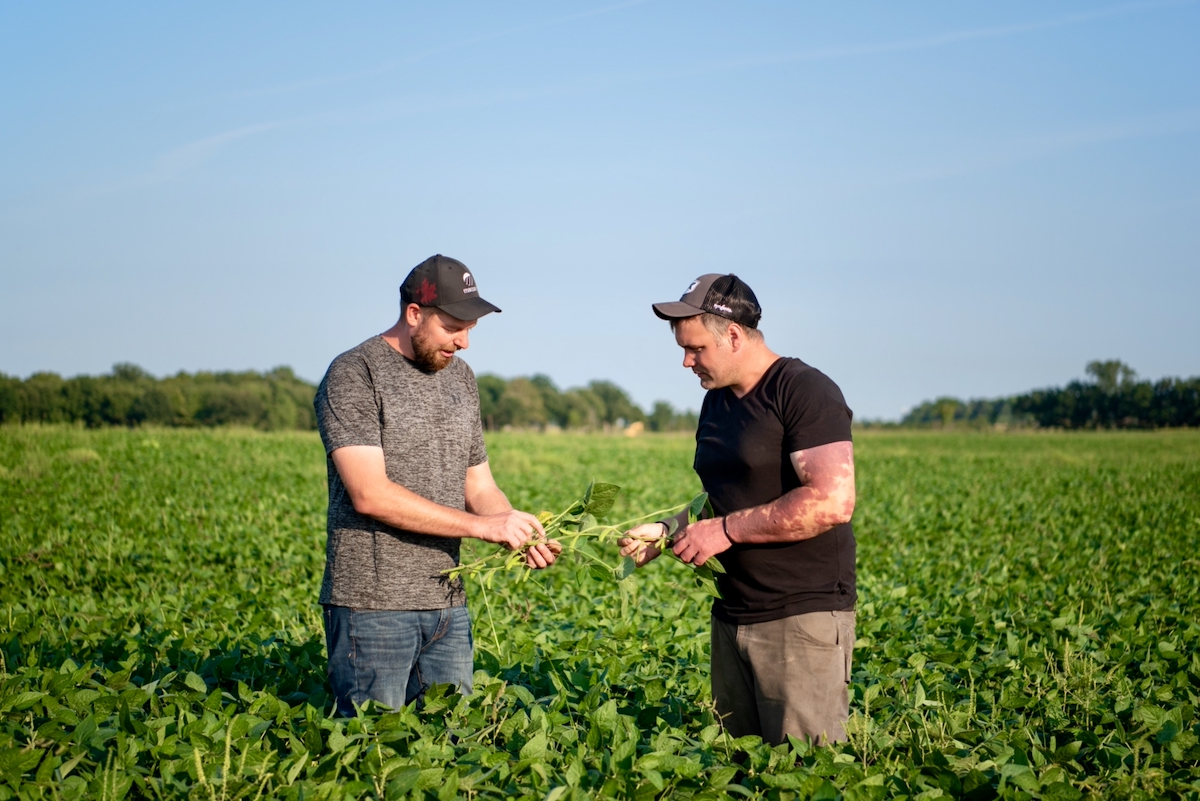
Ontario farmers partner for success
Ontario business partners, Matt Bergman and DJ Wassenaar, have been farming together for 10 years. Their focus on integrating unconventional…
Schoenau wants to know what soybeans are taking out of the soil, what they’re putting back in, and how that affects subsequent crops.
“The expansion of short-season soy acreage into Western Canada got us thinking about the nutrient requirements of soybean,” says Schoenau, who serves both as professor of soil science at the University of Saskatchewan and also as the strategic research chair in soil nutrient management for the Saskatchewan Ministry of Agriculture.
“That’s been fairly well documented for other pulses in Saskatchewan, but not for soy grown under our conditions,” Schoenau says. “We’re also interested in the amounts of nitrogen that soy fixes from the atmosphere and the general effects of soy on nitrogen cycling and the availability of nutrients to following crops.”
To figure all that out, Schoenau and his team have partnered with Tom Warkentin and his pulse crop crew at the Crop Development Centre to work on a three-year study funded jointly by the WGRF, Saskatchewan Pulse Growers and Saskatchewan’s Agriculture Development Fund.
The project will explore both the nutrient requirements of soybeans and nutrient cycling in a typical Saskatchewan rotation, and it will also make side-by-side comparisons with the nutrient cycling of pea and lentil rotations.
Nutrients in
“We have four research sites in total; two in the dark brown soil zone that are in Saskatoon and Scott, and two in the black soil zone that are near Rosthern and Yorkton,” Schoenau says, adding that the sites are being managed by PhD student Jing Xie as part of her thesis work.
In year one (2014), three new soybean varieties, three new pea varieties and three new lentil varieties were seeded into replicated plots. Soil testing was done to get baseline soil nutrient levels at each site prior to planting.
In order to accurately track the flow of nitrogen through the soils and crops, a tracer called N15 (a stable isotope of nitrogen) was added to all three pulses just after seeding. Because this will be the only fertilizer application over the three years of the study, the N15 will clearly show where the soy residue is having an influence on N availability in subsequent crops, including cycling through soil micro-organisms and into the plant.
The first goal of the study is to quantify soy nutrient uptake levels. To do this, researchers look below ground using PRS (plant root simulator) probes during the growing season to measure how the three crops use soil-available nitrogen.
They also look above ground by collecting the yield and nutrient concentration of both grain and straw, then using that data to calculate overall nutrient uptake and removal for each crop type. This, combined with the PRS probe data, will give researchers an accurate measure of nutrient uptake for each crop and let them see how soy compares to pea and lentil.
Nutrients out
Nutrient release to subsequent crops is also being measured above and below ground by looking at crop residues, including roots and stubble.
For the below-ground view, intact soil cores were taken after harvest from all three crop types. The cores were taken to the lab and then frozen. Next, they were thawed in April — a process meant to mimic the winter and spring field conditions that can influence nutrient release.
As they thawed, nutrient release rates were measured using PRS probes. “It allows us to measure the release rate of available nitrogen and phosphate,” says Schoenau. “Nitrous oxide and carbon dioxide gas production is measured at the same time.”
The nutrient contribution of above-ground residue was also measured in the lab, where researchers did an incubation study early on where they took residues from each pulse crop, put them on top of two different soil types, and then grew wheat in them to check differences in nitrogen uptake.
To reproduce that on a field scale, once the research plots were harvested and threshed last fall, researchers put the residue back on the respective plots ready for the 2015 planting.
Next steps
Essentially, the first year of the three-year rotation has been completed and nutrient uptake calculated for each of the three pulse crops in the study. Now it’s time to see what they have left behind and how useful it is.
In the spring of 2015, one variety of spring wheat is being seeded into the soybean, pea and lentil stubble, with no added fertilizer. “We’ll harvest that this fall and measure the nutrient content in the grain and straw to determine nutrient uptake as a function of stubble type,” says Schoenau.
In the spring of 2016, canola will be seeded into the wheat stubble, completing the rotation. Yield and nutrient content of the grain and straw will be measured to determine the third year knock-on effects of each of the three pulse crops.
Schoenau and his team are still compiling data from year one. Already, though, he’s seeing some trends and he thinks that soy might be on a lower rung in terms of nutrient contribution than lentil or pea. He just wants to know how much lower.
“We know peas and lentils contribute about one-half to one pound of nitrogen per bushel as an additional N credit over a non-legume,” Schoenau says. “It will be interesting to see where soybeans fit in.”
That’s good because, as of now, Saskatchewan farmers are making educated guesses when it comes to the soy nutrient cycle and could be losing money on fertilizer they don’t really need, or by not fertilizing enough.
“Our research will be used to develop more accurate fertilizer recommendations for the soybean crop itself, as well as for the crops that will be grown after it,” says Schoenau. “It’s important information if we want to maintain and, indeed, increase crop production in Western Canada in an economic and environmentally sustainable manner.”
WGRF is a farmer-funded and directed non-profit organization investing in agricultural research that benefits producers in Western Canada. For over 30 years the WGRF board has given producers a voice in agricultural research funding decisions. WGRF manages an Endowment Fund and the wheat and barley variety development checkoff funds, investing over $14 million annually into variety development and field crop research. WGRF brings the research spending power of all farmers in Western Canada together, maximizing the returns they see from crop research.



